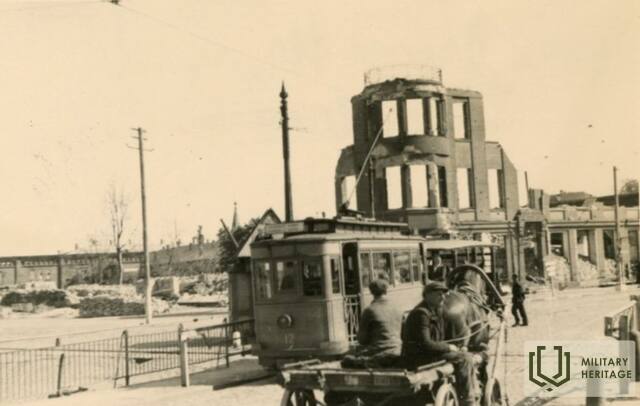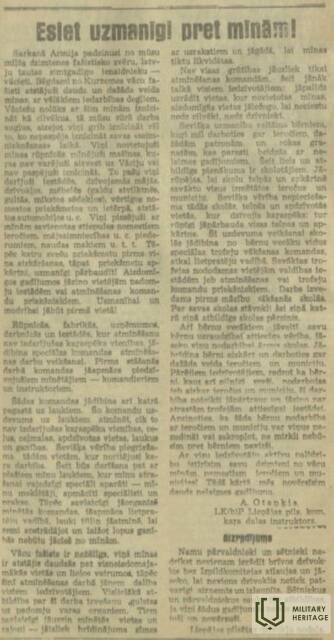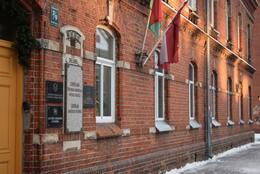Liepāja - at the crossroads of various historical events
The inhabitants of Liepāja were among the first in Latvia to experience the outbreak of the Second World War and among the last for whom the war ended both literally and symbolically. The Second World War and the Soviet occupation of Liepāja ended only in 1994, when the last troops of the USSR's heir, Russia, left the city.
After the demarcation of the spheres of influence of the Molotov-Ribbentrop Pact in 1939 between the USSR and Nazi Germany, the USSR forced Latvia to sign an agreement on mutual assistance and to allow the deployment of its military bases on the territory of Latvia. At the end of October 1939, the first units of the Red Army arrived in Liepaja and stationed in the north of the city - in the War Port. At the same time, the city was left by one of its largest minorities, the Germans, who were repatriated by Hitler to Germany and part of occupied Poland.
1941 became a tragic year in the history of Liepaja. In June 1941, the Soviet authorities deported several hundred Liepaja residents. Many Liepaja residents who did not accept the Soviet occupation were detained and tortured in the Liepāja check house at 19 Republikas Street, which was called the "Blue Miracle". The war struck Liepāja on June 22, 1941. During the battle for the defense of Liepaja, Soviet propaganda later tried to make it one of the Soviet heroes. The time of the German occupation brought a new tragedy - most of the Jews of Liepāja were killed in the German-initiated episode of the Holocaust in the dunes of Šķēde. During the war, the city suffered greatly - the war in the city ended only on May 8, 1945. This was followed by the second Soviet occupation, the deportation of the population, the establishment of a Soviet naval base and the industrialization of the city, significantly changing the composition of the city's population.
Only at the end of the 1980s did the collapse of the USSR provide an opportunity to restore Latvia's independence. The Latvian People's Front, whose exposition opened on January 21, 2001 at the headquarters of the former Liepāja city branch, played an important role in this process. The Liepāja branch of the People's Front was the second largest immediately after the Riga branch - it united 13,000 members. It was from here that volunteer buses were organized during the January 1991 barricades to go to protect the objects in Riga.
Related timeline
Related topics
Related objects
Liepaja Museum exhibition "Liepaja under the occupation regimes"
The Liepāja Museum exhibition "Liepāja under the occupation regimes" is located in Liepāja, 7/9 Klāva Ukstiņa Street.
The exhibition covers the period from 1939 to 1991 during the double Soviet and German occupation. The inhabitants of Liepāja were among the first in Latvia to experience the outbreak of the Second World War and among the last for whom the war ended both literally and symbolically.
It was not until the collapse of the USSR in the late 1980s that the opportunity arose to restore Latvia's independence. The Latvian People's Front played a major role in this process, and its exhibition, opened on 21 January 2001, is housed in the former headquarters of the Liepāja City Branch. The Liepāja branch of the Popular Front was the second largest after the Riga branch, with 13 000 members. It was from here that buses of volunteers were organised during the barricades in January 1991 to go and defend the sites in Riga. On 23 August 1991, the day of the Molotov-Ribbentrop Pact, the Lenin Monument, a symbol of Soviet power in the city, was dismantled. In later years, 500 bronze bells were made from it in Germany - souvenirs of a bygone era. One of these bells is also on display.
World War II and the Soviet occupation of Liepāja ended only in 1994, when the last troops of the USSR's heir, Russia, left the city.
The museum regularly organises thematic exhibitions of its collection and artworks, as well as lectures and meetings with historians and eyewitnesses of recent Latvian history. The museum building is currently being renovated and the exhibition is being renewed.








